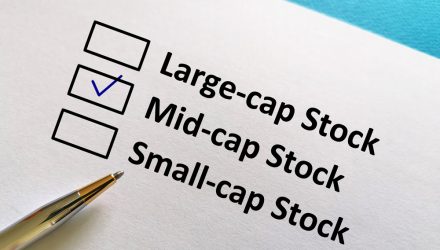Mid-cap stocks are often considered the overlooked corner of the equity market. That’s particularly true when it comes to the application of environmental, social, and governance (ESG) principles.
However, some exchange traded fund issuers bring the advantages of ESG investing to the mid-cap space. Consider the American Century Mid Cap Growth Impact ETF (MID). MID, which is a mid-cap growth fund, turns two years old in July and is an actively managed fund.
MID’s status as an active fund could be advantageous for investors because navigating the combination of mid-caps and ESG can be tricky and not adequately presented by some index-based strategies.
“Mid-cap stocks are typically issued by established companies in industries experiencing or expected to experience rapid growth,” according to Fidelity. “These medium-sized companies may be in the process of increasing market share and improving overall competitiveness. This stage of growth is likely to determine whether a company eventually lives up to its full potential. Mid-cap stocks generally fall between large caps and small caps on the risk/return spectrum. Mid caps may offer more growth potential than large caps, and possibly less risk than small caps.”
Thinking about MID through the lens of its stated market cap exposure, it’s worth noting that mid-caps have a lengthy history of outperforming large-caps while often topping small-cap stocks with less volatility.
Even when accounting for those favorable traits, investors often gloss over mid-caps, frequently over-allocating to large-caps or taking on sizable exposure when they look for growth opportunities. By doing so, they reduce the overall diversification of their equity portfolios.
“A portfolio built with only stocks that fall into a single market-cap category could have different reward and risk patterns than a more broadly diversified portfolio might have,” adds Fidelity. “While diversification by itself does not assure profit or eliminate risk, it is possible that a more diversified portfolio may be more likely to have gains in one area that could help offset losses in another.”
MID features exposure to just six of the 11 GICS sectors, a sign that finding mid-caps with strong ESG traits across the broader mid-cap universe isn’t easy. As a mid-cap growth ETF focusing on ESG, it’s not surprising that MID is heavily allocated to tech stocks — the sector accounts for 42% of the fund’s roster. Healthcare and industrial stocks combine for 34%.
For more news, information, and strategy, visit the Core Strategies Channel.
The opinions and forecasts expressed herein are solely those of Tom Lydon, and may not actually come to pass. Information on this site should not be used or construed as an offer to sell, a solicitation of an offer to buy, or a recommendation for any product.


